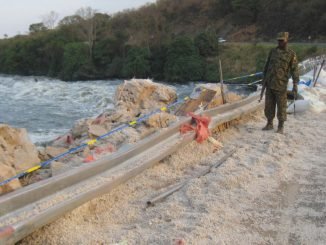
Kampala, Uganda | By Michael Wandati | On Friday 7, June 2024, Uganda experienced a nationwide power blackout for a significant portion of the afternoon, disrupting various businesses across the country.
The Uganda Electricity Transmission Company Ltd (UETCL) announced on its official X handle, formerly known as Twitter, that the blackout was a result of a load rejection test at the Karuma Hydro Power Plant.
“Uganda Electricity Transmission Company Ltd (UETCL) Informs the general public that a national blackout has been registered this morning following a load rejection test at the Karuma Hydro Power Plant. System restoration is underway,” stated UETCL on X-platform, formerly Twitter.
A load rejection test is a crucial procedure conducted before a hydroelectric generating unit becomes operational.
The 600-megawatt Karuma Hydro Power Plant, situated along the River Nile in Kiryandongo District, is poised to increase the country’s installed electricity capacity to 2,000 megawatts once fully operational.
Enoch Kusasira, Head of Communication & Corporate Affairs at Uganda Electricity Generation Company Limited (UEGCL), explained that the blackout occurred during a commissioning trial test at the Karuma Hydro Power Plant.
Enoch elaborated that as part of the commissioning test, all other dams had to be switched off to allow the team to determine if all generating units at the hydropower plant could be integrated into the national grid.
“What I can tell you is that we are testing the plant on the grid, and these are part of the trial tests. you know the plant is almost complete and we are trying to see if we can have all the generating units on the grid,” said Kusasira.
“While doing that, sometimes you need the entire grid, so you first switch off all the other dams and you try the plant on the grid and that’s why it causes that kind of blackout,” Kusasira added.
In May of this year, the Uganda Electricity Generation Company Limited (UEGCL) announced a significant milestone: all six units at the Hydro Power Dam had been synchronized to the national grid. This achievement marks a significant step forward towards the commissioning of the country’s largest power plant.
Construction of the power plant commenced in August 2013 with an initial completion target set for July 2019. However, due to various factors, the completion date has been extended to September of this year.
The project, valued at $1.7 billion, is a joint endeavor, with the Ugandan Government contributing 15 percent of the funding and the remaining 85 percent sourced through a soft loan from the Export-Import (Exim) Bank of China.
Upon completion, the power plant is expected to alleviate the electricity challenges faced in Northern Uganda, particularly in the West Nile region, which has long relied on unstable off-grid electricity sources.
Also Read: Uganda, Kenya suffers nationwide power blackout
Meanwhile, the Uganda Electricity Transmission Company Limited (UETCL) is actively engaged in the construction of a 294 km-long 132kV double circuit transmission line from Kole district, passing through Gulu and Nebbi districts, and culminating in Arua (KGNA).
Muhammad Lubogo, the Manager of Public and Corporate Communications at UEGCL, disclosed that the overall transmission line construction is nearing completion, with progress standing at 96 percent. He added that while the substation in Gulu city has been completed, those in Nebbi and Arua are undergoing testing in preparation for commissioning.
Lubogo further revealed that the general transmission line is scheduled for commissioning on August 30 this year, with President Museveni expected to officiate the ceremony.
In a separate development earlier this year, the government inaugurated the 83-kilometer 132kV Gulu – Agago transmission line, facilitating the evacuation of power from the 83-megawatt Agago/Achwa Hydropower Plant.



